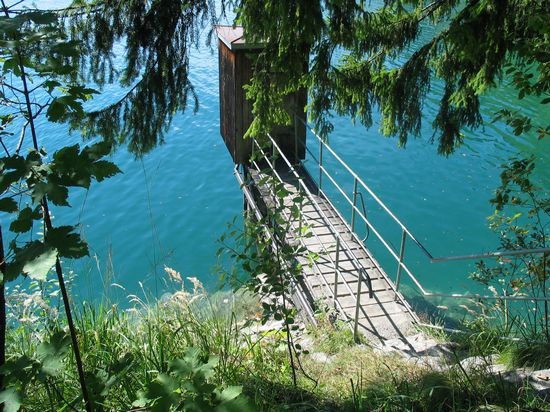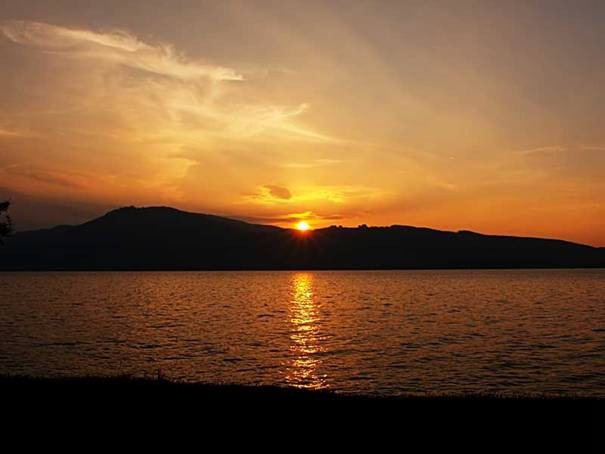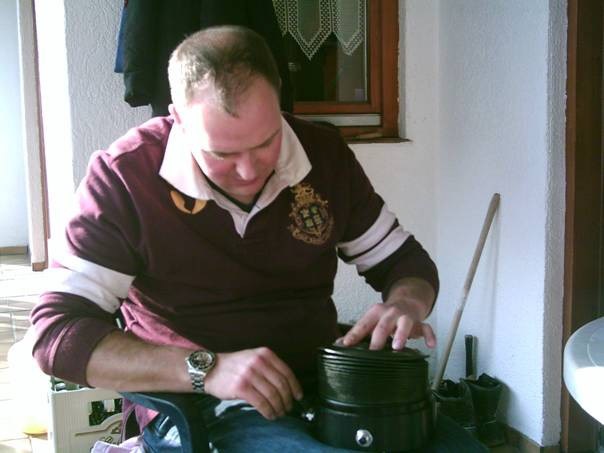
Habitat recovery Walchensee 2006
Team: Robin, Roland, Michi R, Markus, Michi W., Günther, Albert, Toni, Jürgen, Ferdinand
On the weekend before the planned French trip to the Lot we finally found a weekend where most of us had time to salvage the habitat of Oliver Kube and his colleagues which is located at the gallery at about 77m. Of course Roland asked Oliver before if he has another use for the habitat. He kindly left it to us and wished us a lot of fun with the part. All right, let's go!
This habitat was used for decompression by Oliver and his dive partners in 2005 and disappeared into the depths during disassembly. It was fixed to the gallery with spits and wire ropes at a depth of 6m.
Oliver and his men used it for dives in the 130-140 m depth range to improve deco quality and for comfort.
The weather was perfect, 25° C, sunshine, cloudless sky.
That day all hell broke loose at the gallery, surfers, surfers and surfers again! Everywhere camped these with your camper vans. It was a huge luck that we could park our armada of buses at the gallery at all.
There were several teams for the recovery of the habitat:
Team 1 (Trimix): Roland and Michi R, had the task to attach the lifting bag to the habitat and to fill it by means of the stage they had brought with them
Team 2 (Trimix): Robin and Albert, had the task to film, light, secure and support.
Team 3 (Nitrox): Markus, Michi W, Günther and Jürgen received the two Trimix teams on 21 m and took the Trimixstages and accompanied the further deco.
Team 4 : (Surface): secured the water surface with signal buoys, informed surfers, secured the danger zone
Surface Manager : Ferdinand, an experienced platoon leader of the Munich professional fire department coordinated all dives and the Surfacesupport and secured the danger zone in the water.
The two trimix teams dove from the 2 gauge tower down the slope to 77m with a 15/55 trimix. Each diver carried an 80 cf trimix stage with 15/55, 50/25 and oxygen. After about 7 min we reached the habitat and Albert started the video camera. Roland and Michi located a suitable spot to attach the lifting bag to the frame. They then unfolded the lift bag and filled it with air from a stage they had brought along for this purpose.
During the briefing before the TG, we agreed on a signal at the start of the filling process so that everyone would be warned in time and no one was above the habitat and would run the risk of being carried away.
With a loud roar, the air poured into the lift bag and after about 25 seconds the habitat shot towards the water surface like a phoenix from the ashes. The filling of the lifting bag was ensured via an inflator connection and a pressure reducer on the stage.
The lift bag was equipped with appropriate pressure relief valves to prevent it from bursting.
The surf team later told us that the habitat with the lift bag shot up a good 1 m out of the water.
Once the habitat was at the surface of the water, it was pulled to shore by the surfface support people and secured with a rope.
We had about a 15 minute bottom time and then initiated the ascent with the deepstops and what followed was an uneventful decompression. After about 90 minutes we were all out of the water again.
It was all in all very funny and we all had something to laugh about especially about certain underwater communication methods of a diver :-)
In this sense,
Your Cavebase
Gallery
[module-199]













